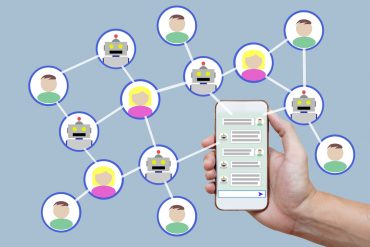
Life sciences organizations that incorporate cognitive insights into their commercial teams’ workflows before their competitors will gain a wide range of benefits.
Early technology adoption can be a complex decision for business leaders. Being among the first in your market to use a new solution can seem risky. But, on the other hand, if the solution solves widespread industry problems, being the first to upgrade can give your company a substantial competitive edge. That is the case with using cognitive insights in the life sciences.
An artificial intelligence (AI)-powered cognitive insights platform, specifically developed to address the complexity and massive data volumes of the life sciences space, is something the industry has never seen before, but this technology offers great potential. Companies that take the opportunity to integrate a next-gen platform now into their commercial teams’ workflows will result in a wide range of benefits, including:
High adoption: Life sciences teams that use dashboard-based business intelligence (BI) tools spend excessive time training to use these solutions, sorting through multiple screens for the information they need, and waiting on their company’s IT or data teams to help them with analysis or customizations. Because BI dashboards are complicated and time-consuming to use, companies generally experience low user adoption among field teams. Our research shows rates of only 10% to 40%.
Natural language processing (NLP) and AI-powered analytics solutions are so easy to use that 100% adoption is common. Users forgo dashboards for natural interaction with their data that allows them to ask or type questions to get the answers they need in an instant. When deeper analysis is required, even at the physician level for complicated queries, all it takes is asking another question. Sales reps, including those on market access and patient services teams, have the insights they need to perform their jobs most competitively.
Democratized data: BI tools currently deployed at many life sciences companies take a top-down approach to data analysis. Managers make requests to data engineers to perform detailed analyses, while front line employees who need the information are forced to wait.
A cognitive insight platform pre-trained on life sciences data, however, puts power into the hands of employees. These next-generation tools provide them with immediate access to insights as a part of their day-to-day workflows – or even via mobile device when walking into a sales meeting.
A recent Gartner webinar revealed that business leaders consider eliminating roadblocks to instant access to insights so vital that 40% of them are now making the implementation of self-service analytics a top priority.
Data ROI: The life sciences companies spend millions each year on data acquisition. However, in many cases, those massive stores of data lose value as data, and IT teams often spend too much time analyzing and setting up analytics to deliver insights for end-users. Combined with a lack of adoption, these efforts yield poor results.
Highly scalable cognitive insights platforms empower pharma teams to finally see a return on investment (ROI) from data acquisition, enabling immediate insights based on the billions of records available for analysis. Most early adopters are shortening their time to analytics to minutes from weeks, able to query every aspect of the vast data sets, and find proactive insights by use of pre-trained ML algorithms.
TCO: According to Gartner, global enterprises waste $48 billion each year on failed BI initiatives. These require heavy assistance from data teams and developers performing maintenance, customization, and scaling.
The contemporary analytics solutions understand industry data and vernacular to work virtually out of the box. The right platforms are designed to integrate with the enterprise applications ecosystem to go live in weeks and require almost zero training for end-users to start using it. Our customers already see 40% fewer ad-hoc queries from the field and up to 50% reduction in TCO as compared to traditional BI platforms.
Agility: The life sciences market continually changes, and the volume of data that companies must analyze to stay competitive constantly increases. The current analytics solutions cannot scale to respond to the increasing demands of the industry. We have seen large pharma organizations piecemealing their data to fit into smaller data models and building hundreds of dashboards to meet scale and response time constraints. Most business users, therefore, end up compromising on business agility and losing opportunities to the competitor. Next-generation tools, however, are purpose-built for the industry environment, delivering optimal performance regardless of data volumes, complexity, or rate of industry change. This technology can easily stay apprised of accounts and informed of market shifts, regulation changes to respond quickly – a need that the COVID-19 pandemic clearly demonstrated as changes occurred in a matter of days or hours. Data analytics processes that take two or three weeks to prepare cannot compete with next-gen BI tools that deliver insights 100 times faster.
Early Cognitive Insights Adopters Widen the Gap Between Competitors
Early adopters of AI-powered data analytics are arming their teams with instantaneous insights and the ability to make informed decisions in real-time. Those insights help them provide personalized service. They also let them identify risks, intervene in accounts, and pinpoint top opportunities. Furthermore, providing tools life sciences teams need to be successful will result in employees who are more productive and motivated and, ultimately, a greater opportunity to increase market share. And early adopters will position themselves for the greatest wins.



























